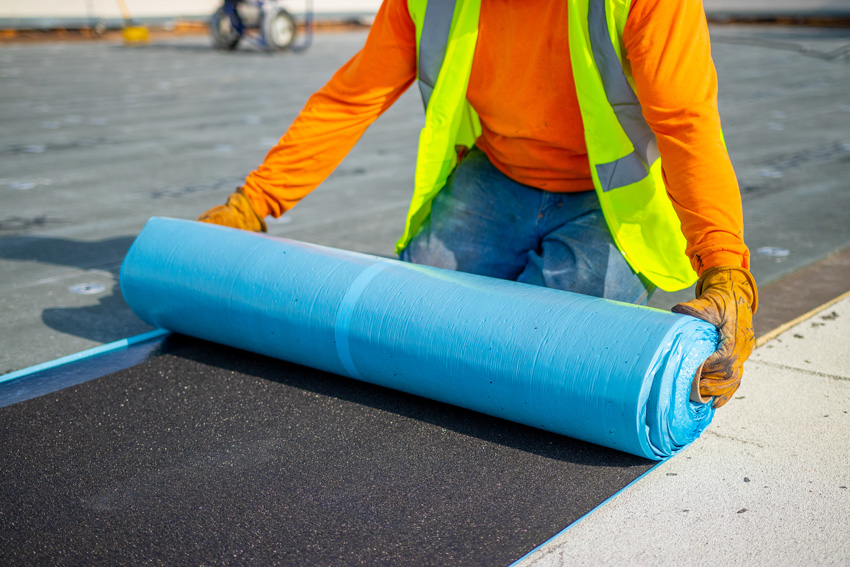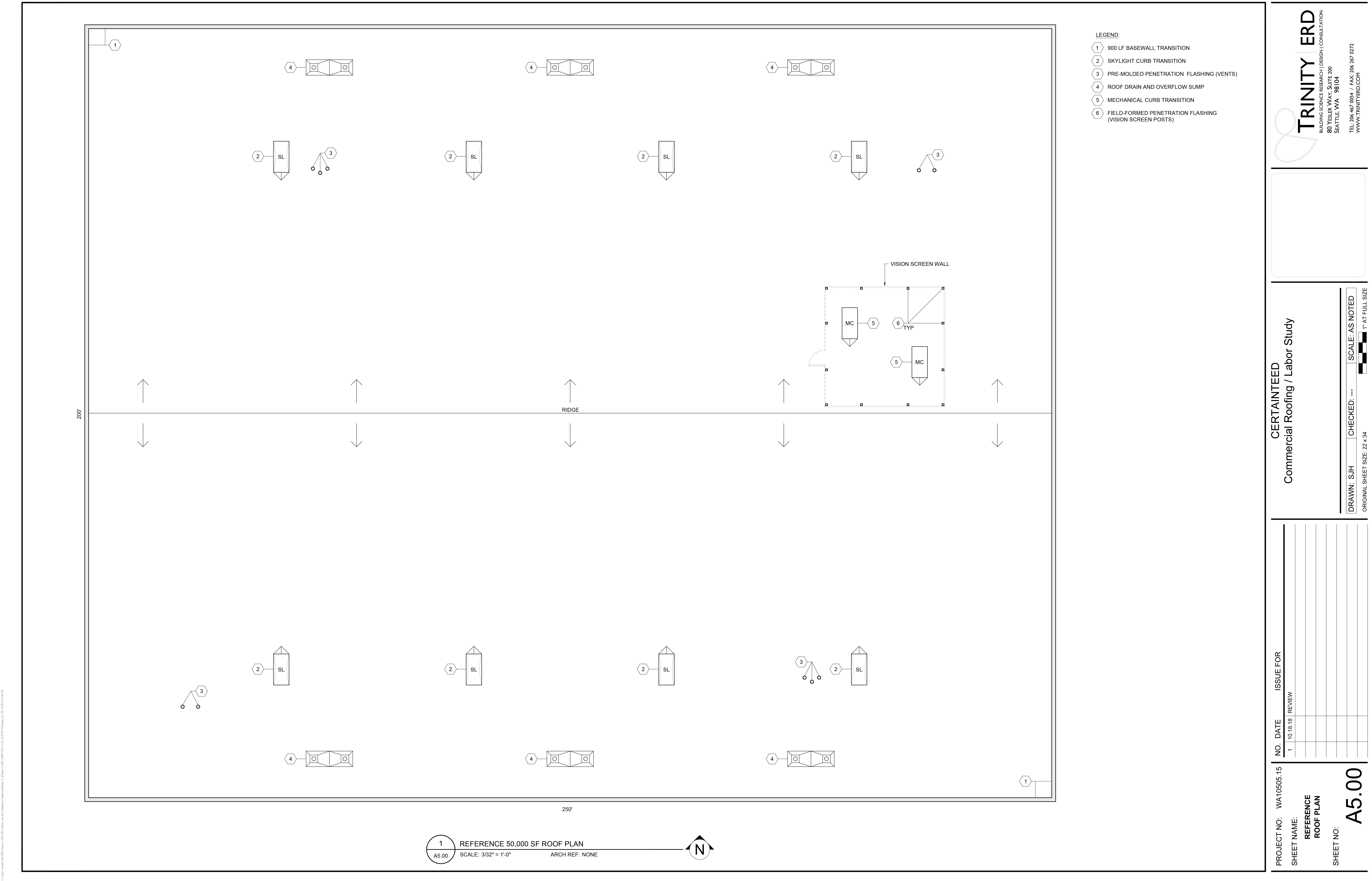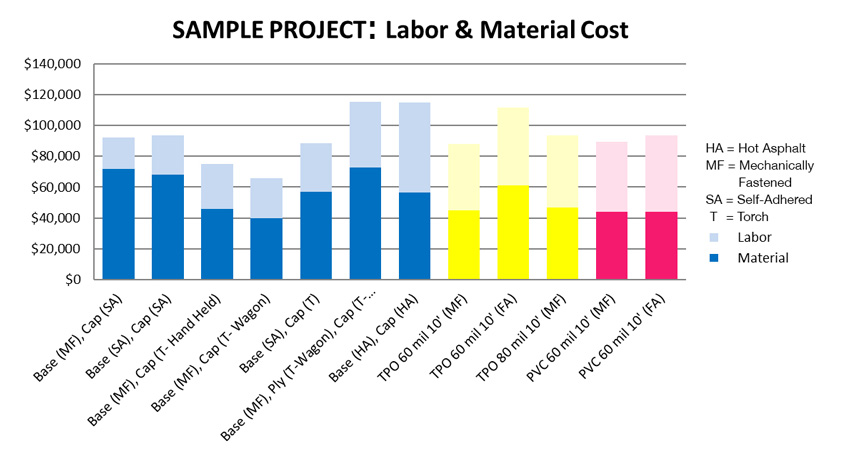Low-Slope Roofing: Specifying a Quality, Cost-Effective Roof System While Considering the Skilled Labor Shortage
Multi-Ply Systems
Installation Methods
The first layer in a multi-ply system is either fully affixed to the substrate or mechanically attached, thereby becoming an “anchor sheet” and not technically a waterproofing layer. Using a mechanically attached approach, the membrane is secured to the roof assembly with mechanical fasteners through both the insulation and decking material. Base sheets may be fully adhered by the methods described below.
The original and most trusted installation method for BUR and modified bitumen membranes is mop-applied using hot asphalt. A layer of hot asphalt is applied to the substrate or base/ply sheet with a large mop and spread evenly over the surface. Quickly following (to avoid cooling), the sheet is set on top of the hot asphalt. BUR materials are manufactured to allow hot asphalt to flow through the sheets, creating a homogenous, watertight, bituminous membrane as the asphalt cools and hardens. Modified bitumen membranes are watertight; asphalt holds the system together and adds additional water protection but does not flow through the system.
Use of cold adhesives for the installation of modified bitumen roofing systems are also common today in the low-slope roofing market. There are several formulations of adhesive, including ultra-low VOC products for use on projects where solvent-based adhesives cannot be utilized, such as on schools and hospitals. Cold adhesive is squeegee applied to the substrate or base/ply sheet and appropriate bituminous sheets are set in place. Cold adhesive roof systems typically require 30 days to fully cure.
The torch-applied method requires the use of a propane torch and flame to heat the substrate or base/ply while melting the bitumen-containing backing of torch-applied products which then adhere to the surface.
Self-adhered modified bitumen membranes, introduced in the early 2000s, are relatively new to the industry. They come with a factory-applied adhesive on the underside of the membrane. A backing material is removed, and the membrane is rolled into place without the use of additional adhesives. Cold adhesive or a hot-air welder is used to seal granule over granule lap joints on cap sheets.
Skilled Labor Requirements/Time to Install
Traditional methods of applying bituminous roof systems require laborers skilled in the use of either hot asphalt kettles and mops, cold adhesive squeegees, or torches. Either of these applications take training, time, and repetitive experience to master. While any roofing material, including self-adhered bituminous membranes, requires training, the elimination of kettles, squeegees, and torches dramatically reduces the learning curve for proper installation. Self-adhered bituminous membranes have also been engineered to reduce application time.

Photo courtesy of CertainTeed and Tice Enterprises Ltd.
Application of a self-adhered modified bitumen base sheet
Factors Impacting Low-Slope Roofing Costs: A National Labor Study
As roofing manufacturers, architects, and contractors alike attempt to identify proven, reliable products that require less skilled labor, a study was conducted by Trinity ERD to quantify the labor savings self-adhered modified bitumen roofing offers as compared to other modified bitumen application methods and single-ply applications.
In order to compare product labor efficiency with data acquired from varying project types and geographical locations included in the study, task-level data (i.e., time required to install a drain with product A) was applied to a sample project. This sample project was then used for comparison of labor efficiencies and costs.
While the study uncovered both the roofing systems with the lowest labor time and the lowest installed cost, it was also observed that roofing-type agnostic factors such as roof design, crew and tool management, and climate had a significant impact on a project’s labor efficiencies.
Academically, the roof covering can be isolated and assessed for its labor needs, but in the real world, these other contributing factors cannot be ignored. Further, the impact that some of these factors have on both labor cost and roof system performance is potentially compounded by the skilled labor shortage. For instance, a quality installation of a complex roof design requires skilled and sometimes specialized labor. And as uncovered in the study, poor or inexperienced crew and tool management practices contribute to avoidable labor inefficiencies and potentially to a compromised installation.











